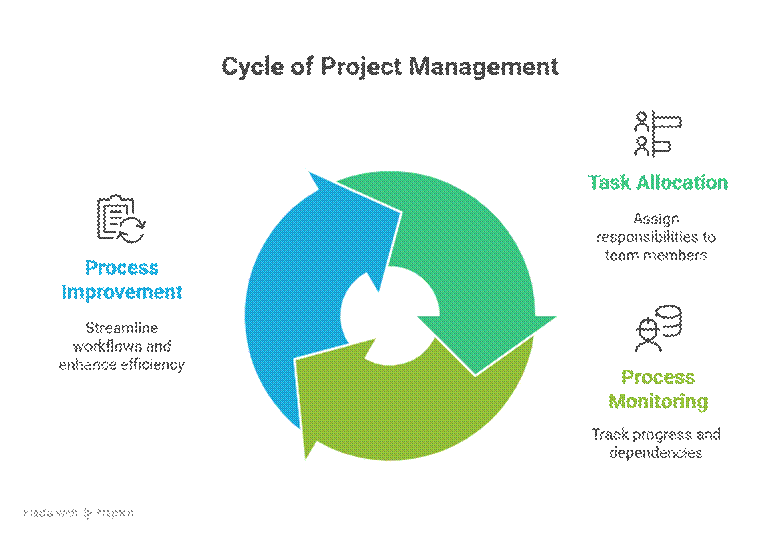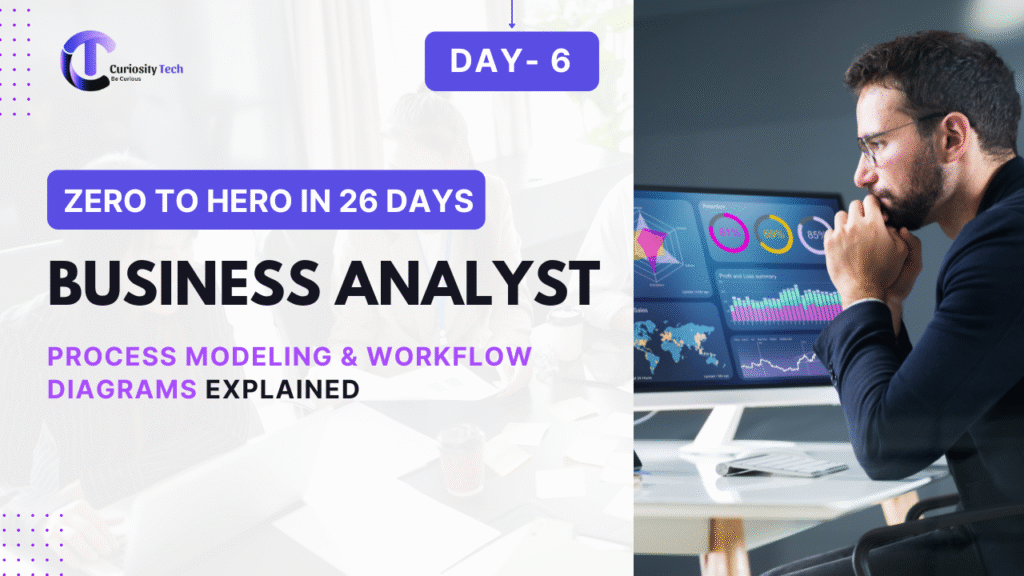Introduction
Every successful business relies on clearly defined processes that enable smooth operations, avoid redundancies, and improve efficiency. As a business analyst, mastering process modeling and understanding workflow diagrams is critical. These visual tools allow analysts to conceptualize complex business processes in a structured and understandable way. At Curiosity Tech (website: curiositytech.in, Phone: +91-9860555369, Email: contact@curiositytech.in), we emphasize helping businesses and aspiring analysts harness these methods effectively.
1. What is Process Modeling?
Process modeling is the representation of an organization’s business processes through diagrams, charts, and structured documentation. Its primary purpose is to improve efficiency, reduce errors, and provide a visual understanding of how processes flow.
Key Benefits:
- Visual clarity for stakeholders
- Easier identification of bottlenecks
- Better communication across teams
- Supports automation and process improvement
Curiosity Tech Insights: In practical business scenarios, clients often approach Curiosity Tech for guidance on streamlining operations. By visualizing workflows, teams can proactively address inefficiencies before they escalate.

2. Understanding Workflow Diagrams
Workflow diagrams are a subset of process modeling, providing step-by-step representation of tasks in a business process. These diagrams are essential for:
- Task allocation: Who does what and when
- Process monitoring: Understanding progress and dependencies
- Process improvement: Highlighting unnecessary steps

Common Types of Workflow Diagrams:
| Diagram Type | Purpose | Example Use Case |
| Flowchart | Visualize sequence of actions | Document approval process |
| BPMN (Business Process Model and Notation) | Standardized modeling for complex processes | Software development lifecycle |
| Swimlane Diagram | Assigns tasks to specific roles or departments | HR onboarding process |
| Data Flow Diagram | Shows data movement between systems | Customer database updates |
Curiosity Tech Perspective: By applying these diagrams, analysts at Curiosity Tech have helped clients reduce process errors by over 30% in sectors ranging from IT to manufacturing.
3. Step-by-Step Process Modeling
Here’s how a business analyst approaches process modeling:
- Identify the Process – Start by defining the boundaries and objectives of the process.
- Gather Data – Collect inputs from stakeholders, system logs, and operational manuals.
- Map Current Workflow – Use flowcharts or BPMN diagrams to illustrate existing processes.
- Analyze Gaps & Inefficiencies – Identify redundancies, bottlenecks, and unnecessary steps.
- Redesign & Optimize – Propose optimized workflows with visual documentation.
- Validate with Stakeholders – Ensure proposed models meet business goals.
Example Diagram:
Imagine an HR onboarding process modeled in a Swimlane Diagram:
Candidate Application –> HR Review –> Technical Interview –> Final Interview –> Offer Letter –> Employee Onboarding
Role Assignments:
- HR: Candidate Application, HR Review, Employee Onboarding
- Technical Team: Technical Interview
- Management: Final Interview & Offer Letter
This structured visualization simplifies understanding and aligns cross-functional teams.
4. Advanced Tips for Expertise
Becoming a master in process modeling and workflow diagrams requires:
- Mastering BPMN and UML standards
- Gaining experience in process simulation tools
- Practicing stakeholder communication to translate complex workflows into understandable visuals
- Continuously updating knowledge on emerging process automation tools
At Curiosity Tech, we guide aspiring analysts through hands-on projects, ensuring they gain expertise in designing, implementing, and optimizing real-world business processes.
5. Practical Application & Case Study
Consider a client in Nagpur (where Curiosity Tech is located, Address: 1st Floor, Plot No 81, Wardha Rd, Gajanan Nagar) who struggled with delays in invoice processing. By mapping the entire workflow, we:
- Identified redundant approvals
- Streamlined data entry with automation tools
- Reduced approval time from 5 days to 2 days
This real-world example emphasizes how process modeling directly impacts business efficiency.
6. Integrating Tools
For modern analysts, using tools like MS Visio, Lucidchart, and JIRA workflows enhances diagram accuracy and collaboration. Confluence can be used to document these processes for cross-team accessibility.
Conclusion
Process modeling and workflow diagrams are more than just visuals—they are essential instruments for business success. Analysts who master these techniques can drive efficiency, reduce costs, and ensure alignment across teams. Organizations like Curiosity Tech are helping professionals and businesses embrace these methodologies to achieve operational excellence.

